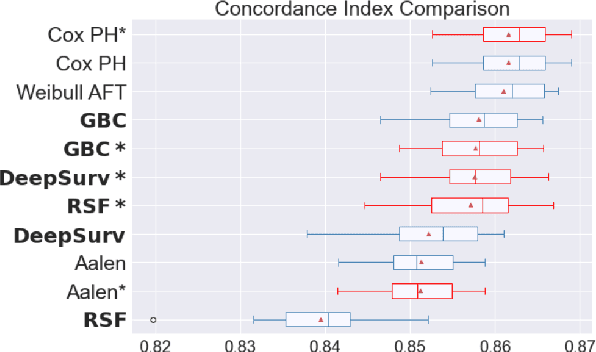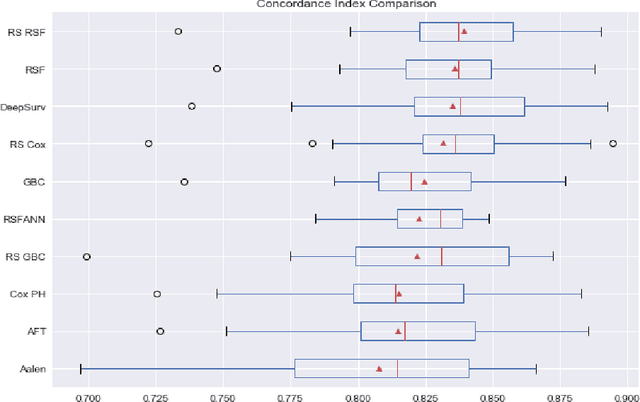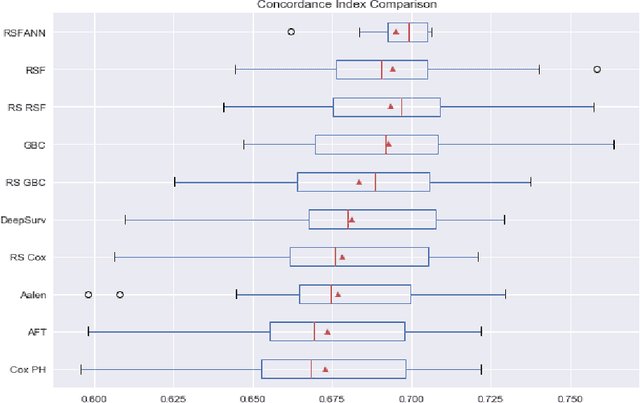Camila Fernandez
LPSM
Experimental Comparison of Ensemble Methods and Time-to-Event Analysis Models Through Integrated Brier Score and Concordance Index
Mar 12, 2024



Abstract:Time-to-event analysis is a branch of statistics that has increased in popularity during the last decades due to its many application fields, such as predictive maintenance, customer churn prediction and population lifetime estimation. In this paper, we review and compare the performance of several prediction models for time-to-event analysis. These consist of semi-parametric and parametric statistical models, in addition to machine learning approaches. Our study is carried out on three datasets and evaluated in two different scores (the integrated Brier score and concordance index). Moreover, we show how ensemble methods, which surprisingly have not yet been much studied in time-to-event analysis, can improve the prediction accuracy and enhance the robustness of the prediction performance. We conclude the analysis with a simulation experiment in which we evaluate the factors influencing the performance ranking of the methods using both scores.
Online Learning Approach for Survival Analysis
Feb 07, 2024Abstract:We introduce an online mathematical framework for survival analysis, allowing real time adaptation to dynamic environments and censored data. This framework enables the estimation of event time distributions through an optimal second order online convex optimization algorithm-Online Newton Step (ONS). This approach, previously unexplored, presents substantial advantages, including explicit algorithms with non-asymptotic convergence guarantees. Moreover, we analyze the selection of ONS hyperparameters, which depends on the exp-concavity property and has a significant influence on the regret bound. We propose a stochastic approach that guarantees logarithmic stochastic regret for ONS. Additionally, we introduce an adaptive aggregation method that ensures robustness in hyperparameter selection while maintaining fast regret bounds. The findings of this paper can extend beyond the survival analysis field, and are relevant for any case characterized by poor exp-concavity and unstable ONS. Finally, these assertions are illustrated by simulation experiments.
Experimental Comparison of Semi-parametric, Parametric, and Machine Learning Models for Time-to-Event Analysis Through the Concordance Index
Mar 13, 2020

Abstract:In this paper, we make an experimental comparison of semi-parametric (Cox proportional hazards model, Aalen's additive regression model), parametric (Weibull AFT model), and machine learning models (Random Survival Forest, Gradient Boosting with Cox Proportional Hazards Loss, DeepSurv) through the concordance index on two different datasets (PBC and GBCSG2). We present two comparisons: one with the default hyper-parameters of these models and one with the best hyper-parameters found by randomized search.
 Add to Chrome
Add to Chrome Add to Firefox
Add to Firefox Add to Edge
Add to Edge